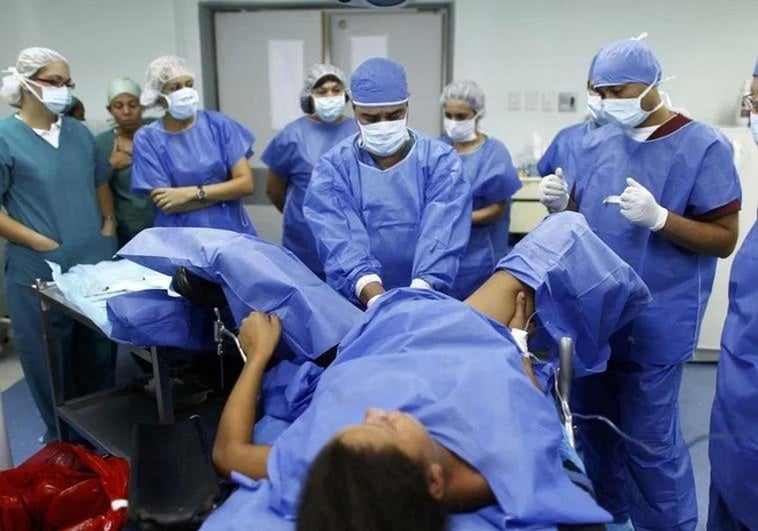
Number of births up in Spain for first time in a decade
The continuing trend of delaying the age of motherhood means that one in ten births is now to a woman aged 40 or over
The number of births increased last year in Spain for the first time in a decade. There were 322,034 in 2024, which is 1,378 more babies than 12 months earlier, according to data published by Spain's INE national statistics institute.
In 2024 the country managed to buck the trend, for the second time in 16 years, of seeing the birth rate constantly fall. This trend began in 2008 with the 'shock' unleashed by the great economic and financial crisis, the subsequent increase in family hardship and the slowdown for years in immigration, which in some periods even saw more returns to their countries of origin than arrivals. The previous break in the trend was also only a slight increase, just like the current one, and it happened in 2014 when there were almost 2,000 more births than a year earlier.
The slight recovery in the number of births coincides with the massive arrival of immigrants in the last two and a half years. This influx has added over one million new residents to the national census since the end of 2022. In addition, the numbers boost meant that Spain surpassed the population barrier of 49 million inhabitants last Christmas.
Immigration is in fact the only demographic factor enabling Spain to increase its population because, despite the slight upturn in births in 2024, the country's natural (net) population (the balance after subtracting deaths from births) is still clearly negative. Last year 439,146 people died in Spain, some 3,000 more than a year earlier and many more than the number of newborns, resulting in a natural decline in the Spanish population (without taking migration into account) of 114,937 people.
The Spanish regions with the greatest increase in births last year were Cantabria (up 13.3%), the Balearic Islands (+5.7%) and one of the few areas in Spain where an increase in births is common every year, Madrid, with an increase of 4.7%. In contrast, births fell most sharply in Galicia (down 4.4%) and the Basque Country, with a decrease of 3.7%.
The most negative natural population balances occurred in Galicia, with a natural population decline of 19,333 inhabitants, in Castilla y León, with 16,385 more deaths than births, and in Catalonia, with a natural population decline of 13,668 persons.
The rise of the older mums
The INE data once again reveal a trend that has become increasingly pronounced as this century rolls on, namely the constant delay in the age of motherhood, which also contributes to the fall in births and the number of children that a woman decides to have.
Last year's records indicate that already more than one in ten women give birth aged 40 or over. In 2024 some 33,570 babies were born to mothers of this age, 10.4% of all successful births in Spain. It is clear that this trend is picking up pace as, when comparing the number of children born to Spaniards aged 40 and over last year and a decade ago, there were 2,624 more births than in 2014, which represents an 8.5% increase in births to older mothers.
Despite the tendency to delay the age of motherhood, the bulk of births in Spain, eight out of every ten, continue to occur among women aged 25 to 39, but with a decline of three and a half points in the last decade. Women aged 25 or under do not account for even one out of every ten women giving birth in Spain - they represent 9.6%, more or less the same proportion as ten years ago.
